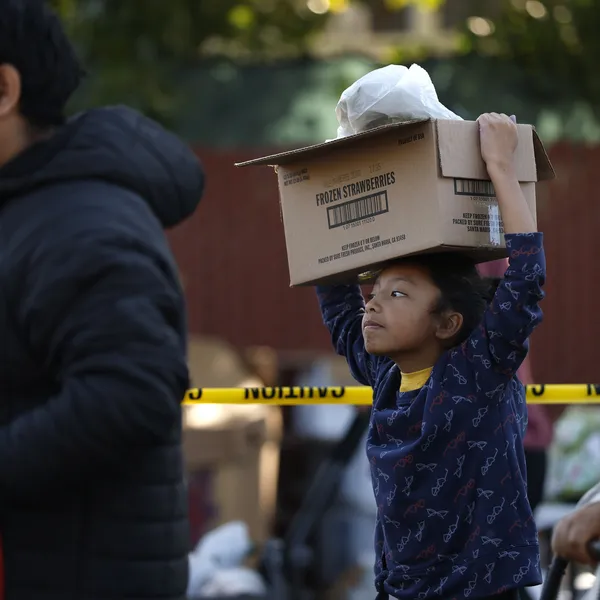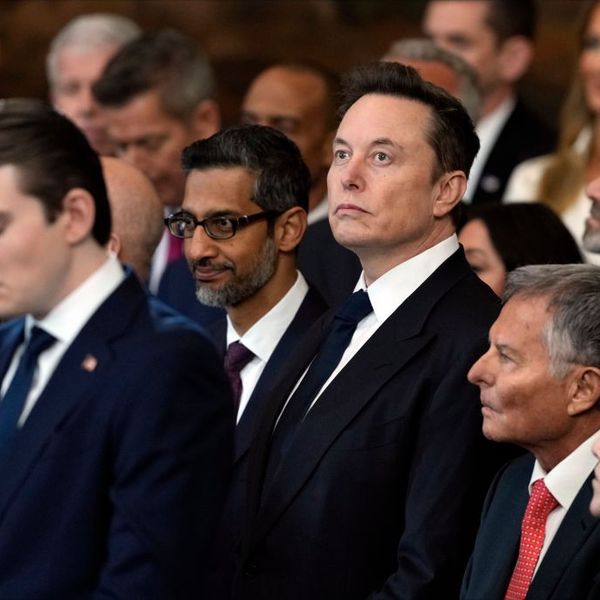On March 4, 2025, Edward Heartney, a minister-counselor at the U.S. mission to the United Nations, remarked at the General Assembly that the Sustainable Development Goals “advance a program of soft global governance that is inconsistent with U.S. sovereignty” and interests.
This rejection of the SDGs aligns with President Donald Trump’s retreat from multilateralism and overall dissatisfaction with the U.N. For example, the Trump administration has moved to pull the United States out of the U.N. Human Rights Council, the Paris agreement on climate action, and the World Health Organization (WHO). In addition, the administration has frozen foreign aid, initiated a global trade war, and failed to pay its U.N. dues as of May 2025.
How can we remodel institutions and programs to be less dependent on American funds while also ensuring the continual engagement of the United States as a leader?
Although intended to prioritize the United States, these developments threaten progress on the SDGs, with negative implications for the global fight against poverty.
What are the Sustainable Development Goals?
The SDGs are a collection of 17 goals set for achievement by 2030, subdivided into targets and indicators. They form the core of the 2030 Agenda for Sustainable Development, adopted by all U.N. member states in 2015. They provide a blueprint to eradicate poverty and pursue inclusive and environmentally responsible economic development under conditions of peace and partnership.
Contrary to Heartney’s claims on sovereignty, the 2030 Agenda is voluntary and non-binding. They are a framework, not a prescription. In fact, the SDGs have not received nearly enough policy and financial support as evidenced by their lack of progress. Although there has been progress in some areas, only 17% of SDG targets are on track to be achieved according to the 2024 SDG report.
How, though, does the America First agenda impact global poverty? While many linkages can be draw, SDGs 3, 5, and 13 provide some examples.
SDG 3: Good Health and Well-Being
SDG 3 covers a wide range of health issues. There are strong correlations between a country’s income status and its performance on some SDG 3 indicators. For example, 2019 data places the cause of death by communicable diseases and maternal, prenatal, and nutrition conditions in low-income countries at 47%, versus only 6% for high-income countries.
Poor health is not only a symptom of poverty. It can compound cycles of poverty through inhibiting disabilities, crippling medical expenditures, and premature death. Meanwhile, the significance of American support for good health across the developing world cannot be overstated, and actions such as freezing foreign aid and cutting the UNAIDS budget are projected to cause the deaths of more than 200,000 people from AIDS and tuberculosis alone by the end of 2025.
However, on the positive side, in South Africa—the country with the highest number of people with HIV-AIDS—the government has committed to provide support for HIV-AIDS treatment in 2025 from the National Treasury, aiming to become a more self-sufficient country.
SDG 5: Gender Equality
There are positive links between improving girls’ and women’s access to health services, education, and economic opportunities and the overall living standards of a country. Hence, SDG 5 aims to end discrimination against girls and women and empower them with equal means. However, the Trump administration’s anti-diversity, equity, and inclusion (DEI) policy risks undermining work and advocacy for SDG 5. While this anti-DEI policy promotes merit-based systems and unity on its face, the administration is also using this campaign to target gender-related programs.
Additionally, by February 20, 2025, the freeze on humanitarian assistance resulted in more than 900,000 women per week being denied contraception around the world. Family planning activities were also not part of a limited waiver to the freeze, aligning with the administration’s overall anti-family planning policies. However, support for civil society organizations working on sexual and reproductive health and rights, and volunteerism, can help plug gaps. For example, 200 U.N. Volunteers recently worked with the WHO in the Republic of the Congo to raise awareness about HIV-AIDS and to challenge related stigma via a social media campaign.
SDG 13: Climate Action
The Trump administration’s rejection of the Paris agreement also aligns with support of an “overdue course correction on… climate ideology, which pervade the SDGs,” in the words of Heartney. The Paris agreement—the preeminent international treaty to combat climate change—is essential to SDG 13. Without the participation of the United States, which is the second largest emitter of greenhouse gasses in the world, the Paris agreement and SDG 13 are set to fail.
However, at this stage, climate action is not an “ideology” but a necessity, and the Green transition is not with its own economic opportunities that could advantage the United States.
Similar to the case of SDG 3, not only do low-income households experience the worst impacts of climate change, these impacts can compound poverty through property damage, income disruptions, displacement, and premature death. This further threatens progress on SDG 1.1 (extreme poverty), which has been one bright spot of success amid the ailing SDGs. For example, between 1990 and 2019, the prevalence of extreme poverty in developing Asia fell from 58% to 5%. Climate change, however, could push millions back into extreme poverty by 2030.
Fortunately, efforts like AMERICA IS ALL IN commit Americans to the Paris Agreement even as climate action is moving forward on other fronts. For example, Green bonds have seen rapid growth—rising from $40 billion in 2015 to more than $500 billion in 2023—with the United States being a top issuer in that period.
Looking Forward
In mid-July, New York will host the High-Level Political Forum on Sustainable Development (HLPF), which will review five SDGs, including SDGs 3 and 5. The HLPF provides an opportunity to have important conversations about these issues, and to find solutions.
For example, although the SDGs need the participation of the United States, how can we remodel institutions and programs to be less dependent on American funds while also ensuring the continual engagement of the United States as a leader? The recently adopted Pact for the Future—while not without flaws—also offers an impetus for discussions on why multilateralism is retreating. Finally, it is important to continue leveraging the potential of SDG localization in light of insufficient national action and leadership.
When it comes to multilateral action, the Trump administration is about to prove that the United States is not, in fact, an indispensable nation.



